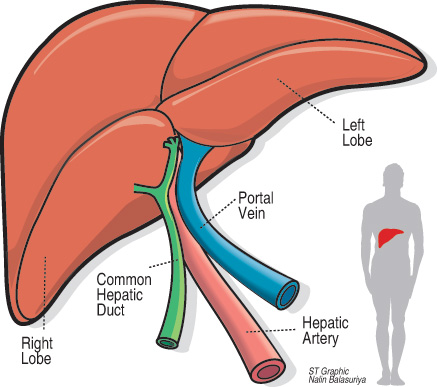Liver tumours that don’t pose serious health risk
 A tumour is an abnormal growth of cells or tissues. Some tumors are malignant, or cancerous. Others are benign, or noncancerous.
A tumour is an abnormal growth of cells or tissues. Some tumors are malignant, or cancerous. Others are benign, or noncancerous.
Cancerous liver tumors can be fatal. Most of the time, cancerous tumors in the liver started in another organ and spread to the liver. This form of liver cancer is called metastatic liver cancer. Cancerous liver tumours that start in the liver are called primary liver cancers.
Noncancerous, or benign, liver tumors are common. They do not spread to other areas of the body, and they usually do not pose a serious health risk.
How are benign liver tumours detected?
In most cases, benign liver tumours are not detected because they cause no symptoms. When they are detected, it is usually because a patient required a medical imaging test, such as an ultrasound, CT test or MRI, for another condition.
What are the types of benign liver tumours?
The three most common types of benign liver tumours are called:
Hemangioma
Focal nodular hyperplasia
Hepatocellular adenoma
What is a hemangioma?
Hemangiomas are the most common form of benign liver tumours. They are a mass of abnormal blood vessels. Up to 5 percent of healthy adults may have small hemangiomas in their liver. Women are more likely than men to develop them.
Usually these benign tumours produce no symptoms and do not need to be treated. In very rare cases, an infant with a large hemangioma may need to have it removed surgically to prevent complications like clotting and heart failure.
What is a focal nodular hyperplasia?
Focal nodular hyperplasia is the second most common form of benign liver tumor after hemangiomas. These tumours occur mainly in women between the ages of 20 and 30. Like the other forms of benign liver tumors, they are generally discovered during imaging tests for other conditions.
Sometimes referred to as FNH, these tumours usually do not cause symptoms or require treatment. If they are large, doctors may recommend that they be removed surgically to avoid the risk of rupture, but this is very uncommon.
What is a hepatocellular adenoma?
Hepatocellular adenomas are less common benign liver tumours. They occur most often in women of childbearing age. They used to be linked to oral contraceptives, when higher doses of estrogen were used.
Since these tumours generally do not cause symptoms, most are never detected. In rare cases, these tumours may rupture and bleed into the abdominal cavity. When doctors discover a large adenoma, they may recommend that it be surgically removed to prevent that possibility.
Hepatocellular adenomas may enlarge in women who take hormone pills, so doctors will often recommend discontinuing birth control pills or postmenopausal hormone replacement therapy to female patients who have this kind of tumour.


